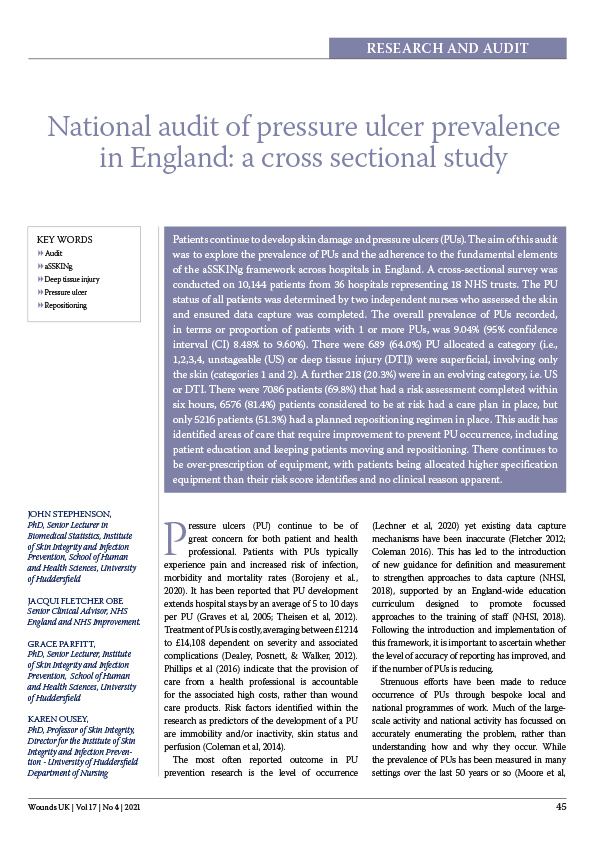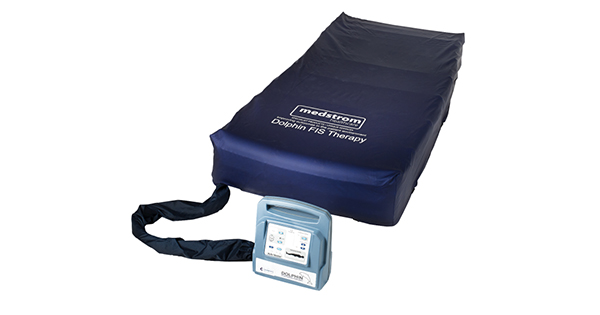Patients continue to develop skin damage and pressure ulcers (PUs). The aim of this audit was to explore the prevalence of PUs and the adherence to the fundamental elements of the aSSKINg framework across hospitals in England. A cross-sectional survey was conducted on 10,144 patients from 36 hospitals representing 18 NHS trusts. The PU status of all patients was determined by two independent nurses who assessed the skin and ensured data capture was completed. The overall prevalence of PUs recorded, in terms or proportion of patients with 1 or more PUs, was 9.04% (95% confidence interval (CI) 8.48% to 9.60%). There were 689 (64.0%) PU allocated a category (i.e., 1,2,3,4, unstageable (US) or deep tissue injury (DTI)) were superficial, involving only the skin (categories 1 and 2). A further 218 (20.3%) were in an evolving category, i.e. US or DTI. There were 7086 patients (69.8%) that had a risk assessment completed within six hours, 6576 (81.4%) patients considered to be at risk had a care plan in place, but only 5216 patients (51.3%) had a planned repositioning regimen in place. This audit has identified areas of care that require improvement to prevent PU occurrence, including patient education and keeping patients moving and repositioning. There continues to be over-prescription of equipment, with patients being allocated higher specification equipment than their risk score identifies and no clinical reason apparent.







